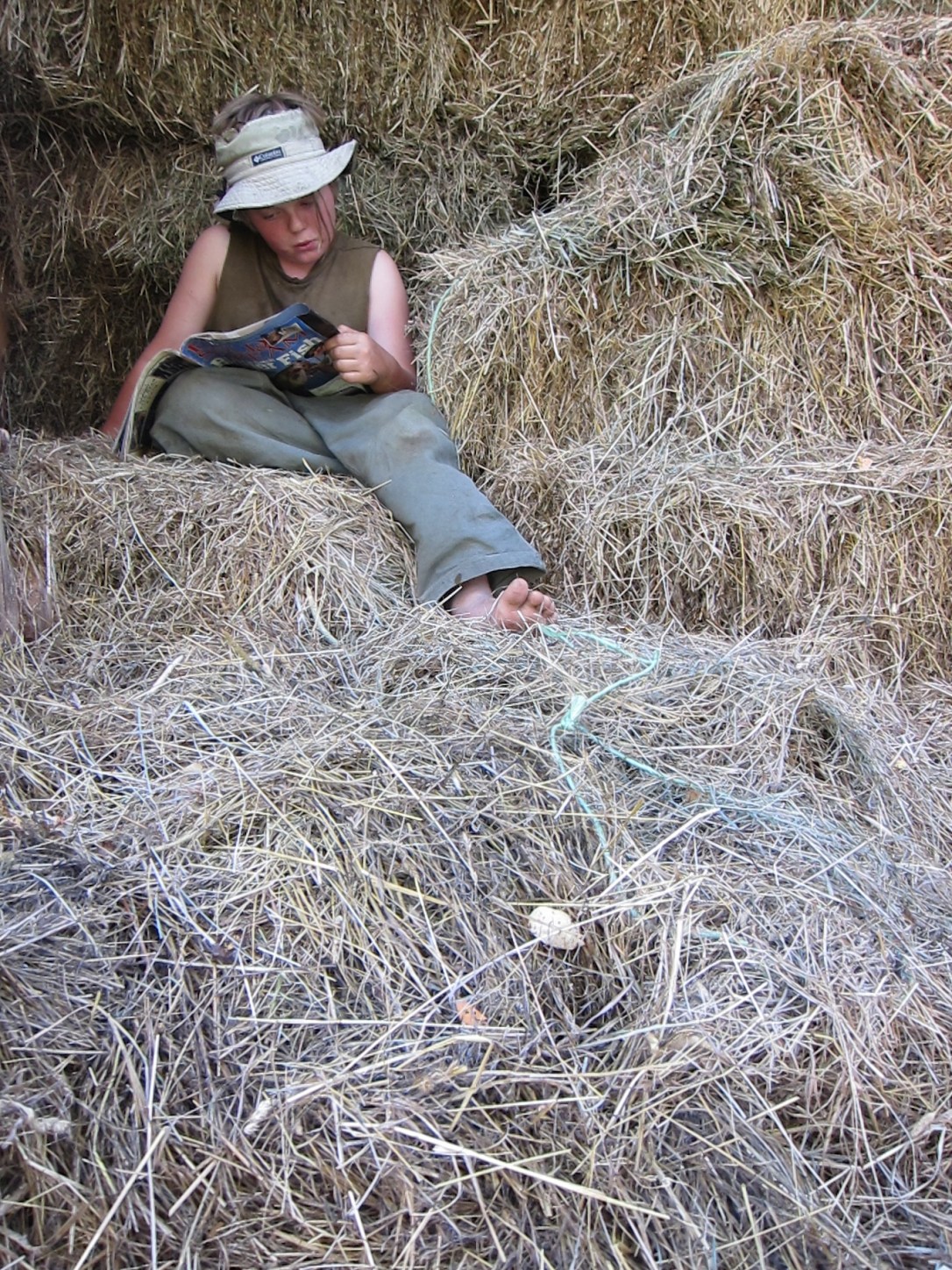
This morning was an early one, what with Rye’s confounded cat Winslow having squoze his way through the gate through which he is not supposed to squeeze and prancing his way upstairs and settling into a spot directly to the right of my slumbering head, where he commenced to purr maliciously. It was 4:45 a.m., or thereabouts, so I tripped into my office and knocked out a few words, and then, just as soon as I thought perhaps I could make out the shaggy forms of the sheep in the predawn gloaming beyond my office window, I strolled outside.
It was eerie warm, the air soup-thick and rank with the smell of the skunks the boys had trapped for our friend Todd. Not for the first time (and certainly not for the last), I cursed my sons’ odd desires and also Penny’s and my willingness to accommodate them. I mean, really: Who in their right freakin’ mind would let their children trap skunks and skin them in the front yard? Who in their right freakin’ mind would let their children build a trapping shed at the junction of lawn and driveway, in plain smell of the house? Don’t get me wrong: I want to support my boys and all, but sometimes it just seems like it’d be a hell of a lot easier if they were into X Box and baseball. Sometimes, it just seems like it’d be a hell of a lot easier if we just said “no” a little more often.
So now the interior of our new-to-us Subaru, an extremely generous and timely gift from Penny’s folks, who have recently given up driving at almost precisely the same moment our old car failed inspection for structural rust issues, and the first vehicle we’ve ever owned that was made in this century, carries the faint odor of dead skunk. I have this fantasy that I’m going to stop for a hitchhiker and he’s gonna get one whiff of the situation and say something like “no thanks, man. I need the exercise, anyway.”
Whatever. I spent the remainder of the early morning moving from animal to animal as the sky went about its business of exchanging dark for light. Pigs, chickens (both meat and layers), and the new piglets, which are down in the nascent nut grove, rutting out the wild raspberries and spreading piggy fertilizer. I strolled down to the cows at the far end of the pasture, and stood under the big apple tree along Melvin’s boundary and ours, just watching. I’d had the idea I might gather some drops for the pigs, but I’d brought no bucket and hadn’t even worn a shirt from which to fashion a carrier, and I realized how foolish I’d been.
A minute passed, maybe two. It was not raining, but it felt as if might start, and I remembered the ending lines of Hayden Carruth’s poem “Cows At Night”:
But I did not want to go,
not yet, nor knew what to do
if I should stay, for how
in that great darkness could I explain
anything, anything at all.
I stood by the fence. And then
very gently it began to rain.
Then I walked home.

